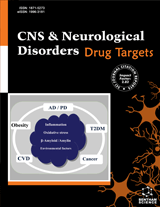Abstract
Serotonin was the first neurotransmitter believed to be involved in cephalic pain transfer forward to the cortex, but the precise mechanism was confirmed only after sumatriptan, a 5-HT1B/1D high affinity agonist, was introduced in the acute treatment of migraine. Although very efficient for migraine relief, activation of 5-HT1B receptor may also cause vasoconstriction outside brain, within the heart arteries for example. Unlike 5-HT1B, the 5-HT1D receptor is not located in vascular tissues but exclusively within neuronal, but high affinity agonists for 5-HT1D failed to prove clinical significance in randomized trials. The recent clone of 5-HT1F receptor together with data showing that sumatriptan exerts high affinity for this receptor subtype generated high expectations. Potent agonists for 5-HT1F receptors were effective in animal models for migraine and later clinical trials showed efficacy even in humans, introducing the first line future anti-migraine drugs. Apart from 5-HT1F, another new cloned 5-HT subtype receptor, the 5-HT7 also attracts attention. Recently developed and clinically tested selective 5HT7 antagonists SB-269970-A and SB-656104-A suggest that the receptor may play a role in other CNS disorders including anxiety and cognitive disturbances, suggesting a potential role for the migraine prophylaxis. These data and speculations are discussed in details in this paper with special references.
Keywords: 5-HT1D receptors, mRNA, anti-migraine drugs, 5-HT1B, LY334370




























